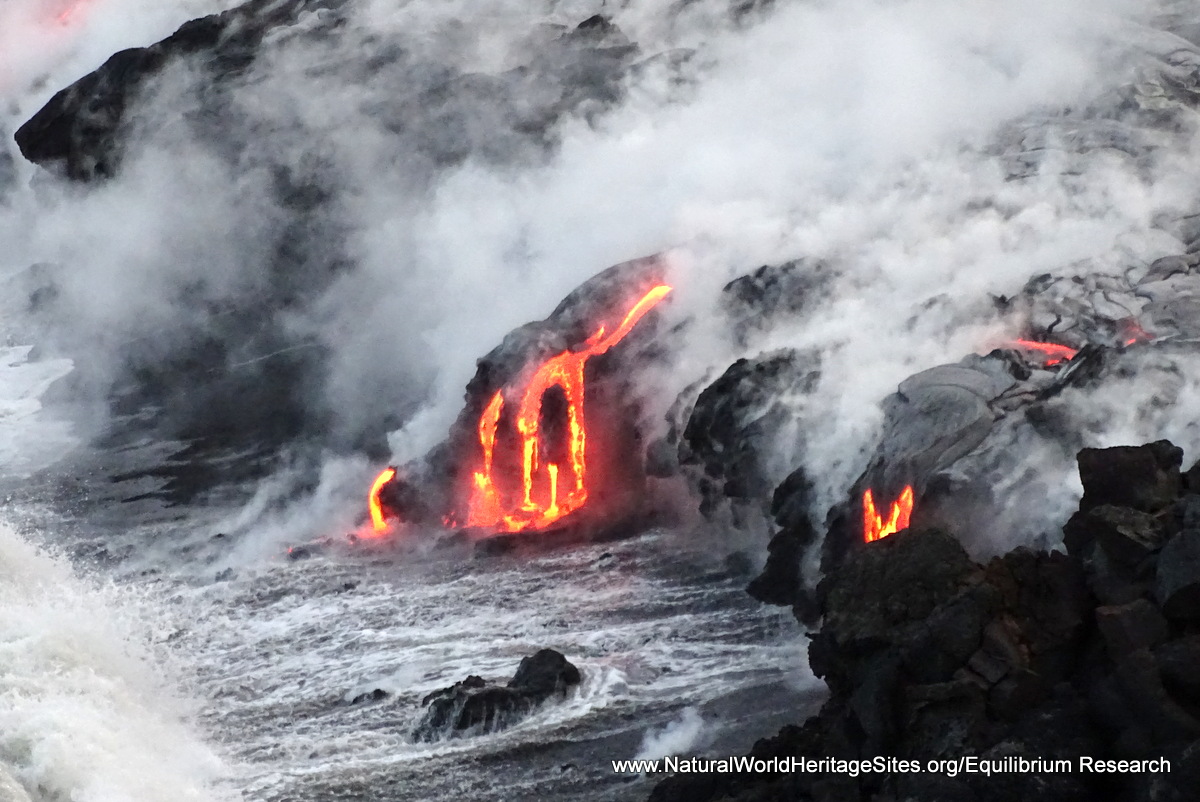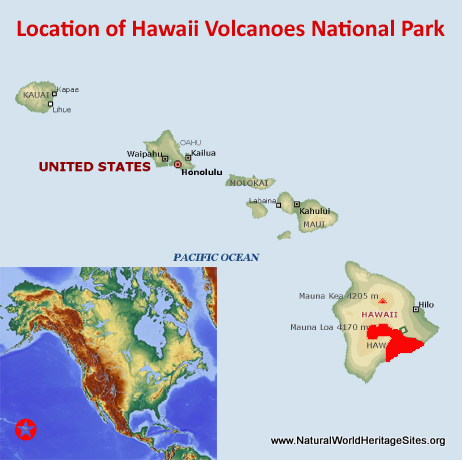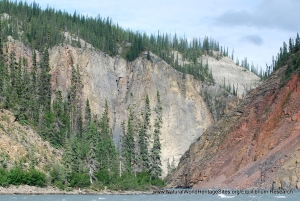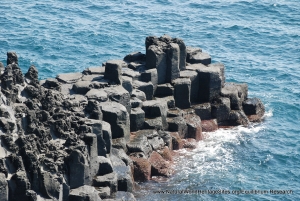EXPLORE Hawaii Volcanoes National Park with this slideshow, check the location map and get all the facts and information below.
For slideshow description see right or scroll down (mobile). Click to view slideshow
Location and Values: The Hawaii Volcanoes National Park is located on Big Island, the largest of the islands that make up the Hawaiian archipelago in the central Pacific Ocean. The site includes two of the world’s most active volcanoes, and exemplifies the process of island building through volcanic processes. One of the two volcanoes (Mauna Loa) is the greatest volcanic mass on Earth (measured from the ocean floor), and the continuing state of volcanic activity produces an ever-changing landscape.
Conservation Status and Prospects. According to IUCN’s Conservation Outlook Assessment (2017) the conservation status of the Hawaii Volcanoes National Park is ‘good’. The IUCN report notes that the geological values of the site are secure and the park is well managed and supported by local communities. In terms of protecting the many endemic species of flora and fauna, there have been some notable successes in alien species control, species recovery, and ecosystem restoration, but more remains to be done.
Links:
Google Earth
UNESCO Official Website
IUCN Conservation Outlook
UNEP-WCMC Site Description
Birdlife IBA
Slideshow description
The slideshow ‘tells the story’ of Hawaii Volcanoes National Park with a portfolio of photos by Sue Stolton and Nigel Dudley (Equilibrium Research) from a visit in September 2016. They illustrate the landscape features of this outstanding place, including some wonderful examples of ‘natural art’ in the forms of solidified lava flows. Although the site is inscribed for its geological values, it supports a significant number of Hawaiian endemic plants and animals, some of which are included in the slideshow.
Factfile
Website Category: Islands; Earth Feature
Area: 879 km2
Inscribed: 1987
Criteria:
- Geological features (viii);





